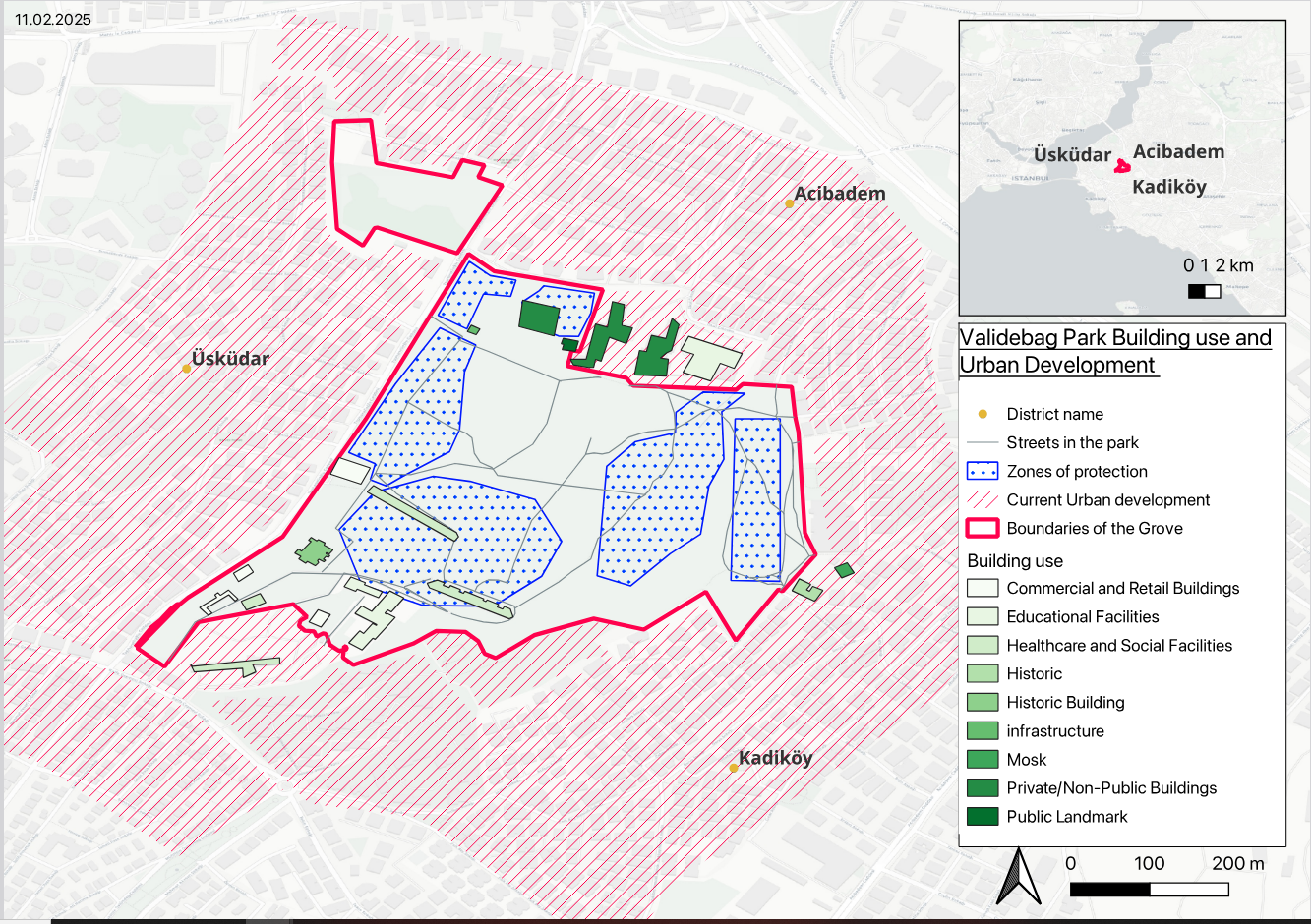Validebağ Grove - A Micro-research in Istanbul
Validebağ Grove, also known as Adile Sultan Grove, is a natural, publicly accessible green space located between Istanbul’s Üsküdar and Kadıköy districts, covering an area of 354,000 square meters. Since 1999, the grove has been registered as a first-degree natural protected area. As one of the few remaining green spaces amidst Istanbul’s dense urban development, Validebağ Grove stands out for its environmental, cultural, and historical significance.With its rich ecosystem, Validebağ Grove is not only an essential part of human life but also an indispensable habitat for wildlife. According to the most recent research conducted in 2022, the grove is home to 161 bird species, 31 different butterfly species, and a total of 107 woody plant species, including 71 monumental trees, the oldest of which is 268 years old
The history of Validebağ Grove offers a summary of the policies pursued in Turkey regarding urbanization and green spaces. The grove is a historical heritage site with the Adile Sultan Pavilion, Sultan Abdülaziz Hunting Lodge, and historical stables, all remnants from the Ottoman Empire. During the early years of the Republic of Turkey, established in 1923, a sanatorium, preventorium, and a teachers lodge were built within the grove in line with the socio-economic policies of the era. The 1980s marked a turning point in Turkey's political and urbanization history. From this decade onwards, Validebağ Grove became a target of privatization and capital- driven policies, leading to gradual environmental degradation. During these years, the stream that served as a stopover for migratory birds dried up, the natural soil was replaced with marble flooring, and the historic stables were converted into cafes. The most visible period of transformation for Validebağ Grove was in 2014. In that year, the Ministry of Environment and Urbanization reclassified the status of the green space adjacent to Validebağ Grove as a place of worship. Despite lawsuits filed by civil society against this status change and widespread protests and demonstrations known as the Validebağ Resistance, the mosque’s construction was completed in 2015. In the following years, Validebağ Grove, in the middle of Istanbul’s dense urbanization, continued to be the subject of various profit-driven plans proposed by central and local governments. However, civil society has persisted in its efforts to preserve the natural integrity of the grove, organizing protests, setting up signature campaigns, and actively resisting interventions by central and local authorities.
Environmental Activism to resist Green Grabbing. Communities building Ecological Wisdom to protect the Validebag Grove and Park.


Mapping process
Mindmapping of the stakeholders
